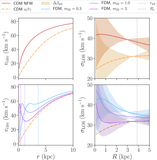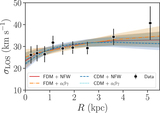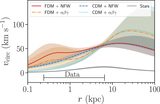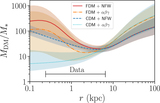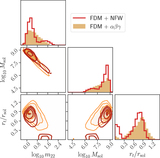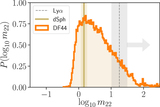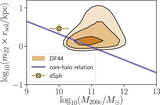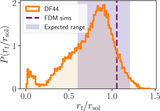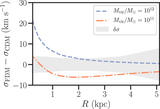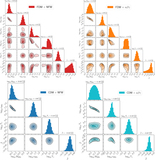Image Details
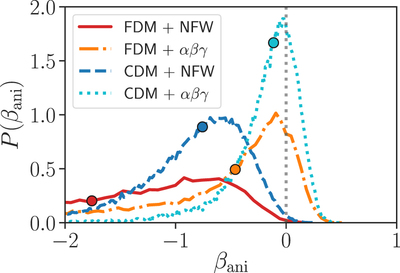
Caption: Figure 4.
Posterior distributions of the orbital anisotropy parameter for the FDM halo models, compared with their CDM halo counterparts. The median of each distribution is marked by circles. The NFW models (both for CDM and FDM) prefer tangentially biased orbits (﹩{\beta }_{\mathrm{ani}}\lt 0﹩), with the tail of the distributions extending to the prior bound at ﹩{\tilde{\beta }}_{\mathrm{ani}}=-1.5﹩ (﹩{\beta }_{\mathrm{ani}}=-30.6﹩). The ﹩\alpha \beta \gamma ﹩ models are consistent with isotropic orbits (βani = 0, shown by the gray dotted line), but all of the posterior distributions are skewed in the direction of tangential anisotropy.
Copyright and Terms & Conditions
© 2019. The American Astronomical Society. All rights reserved.


